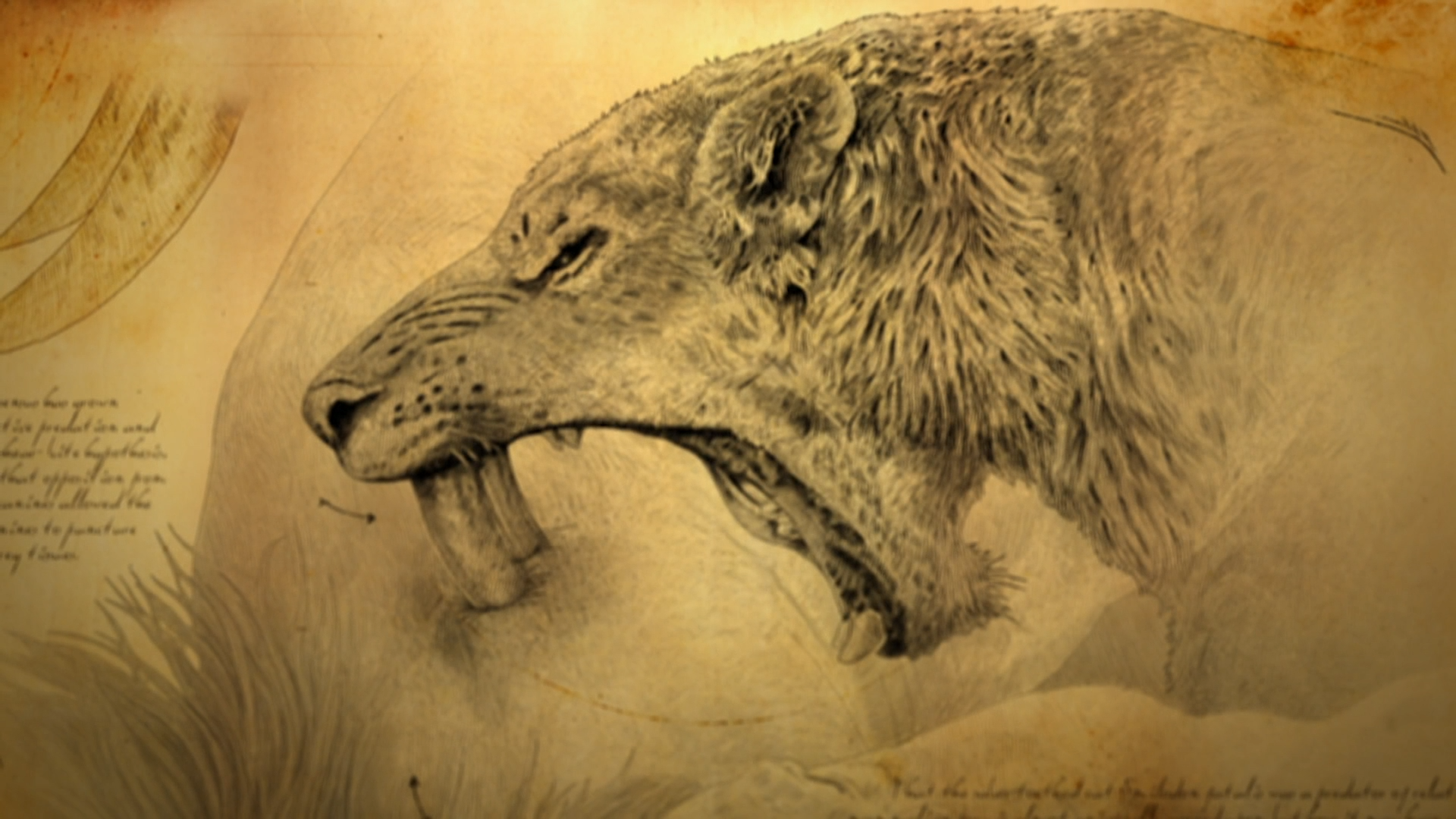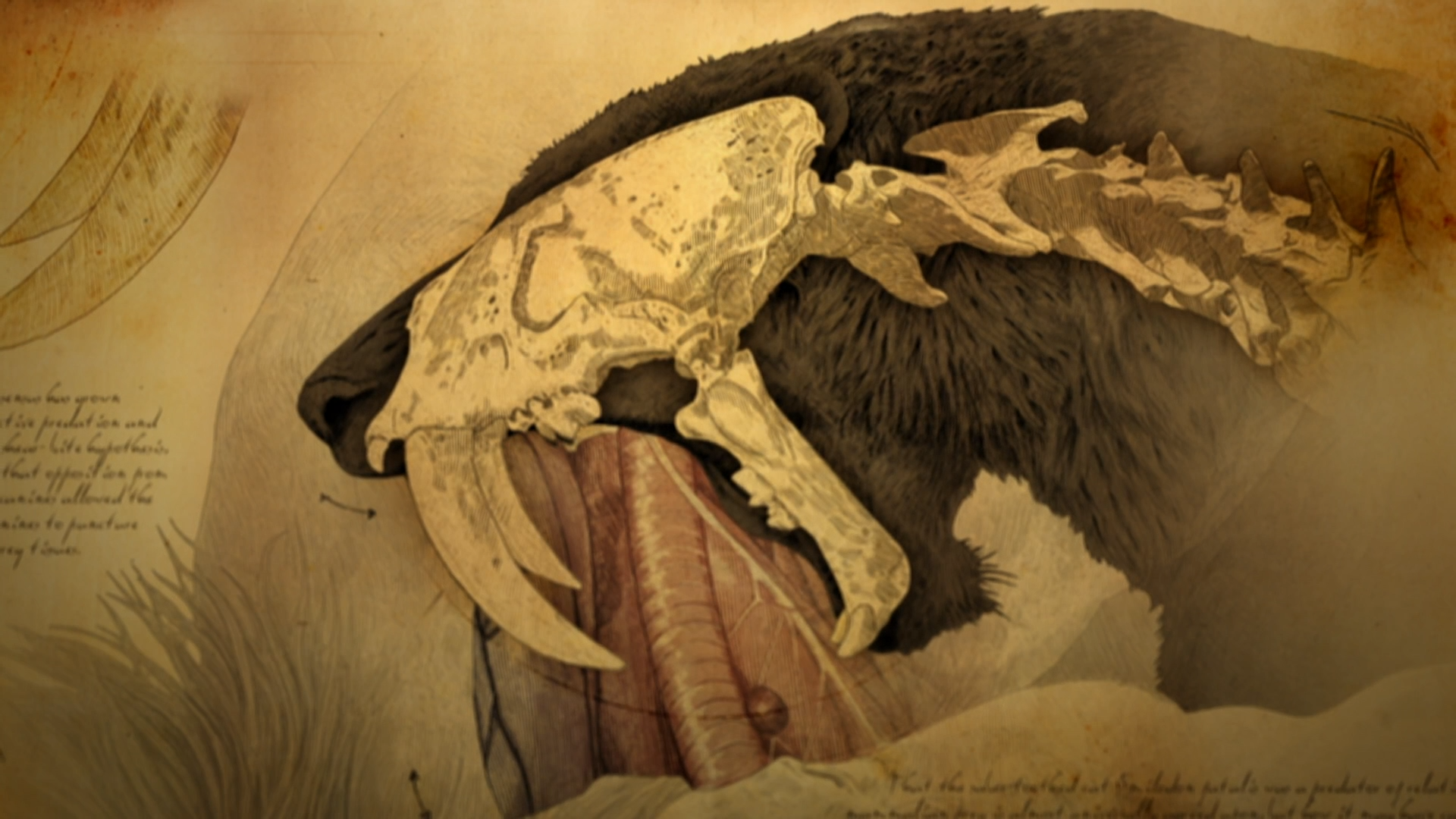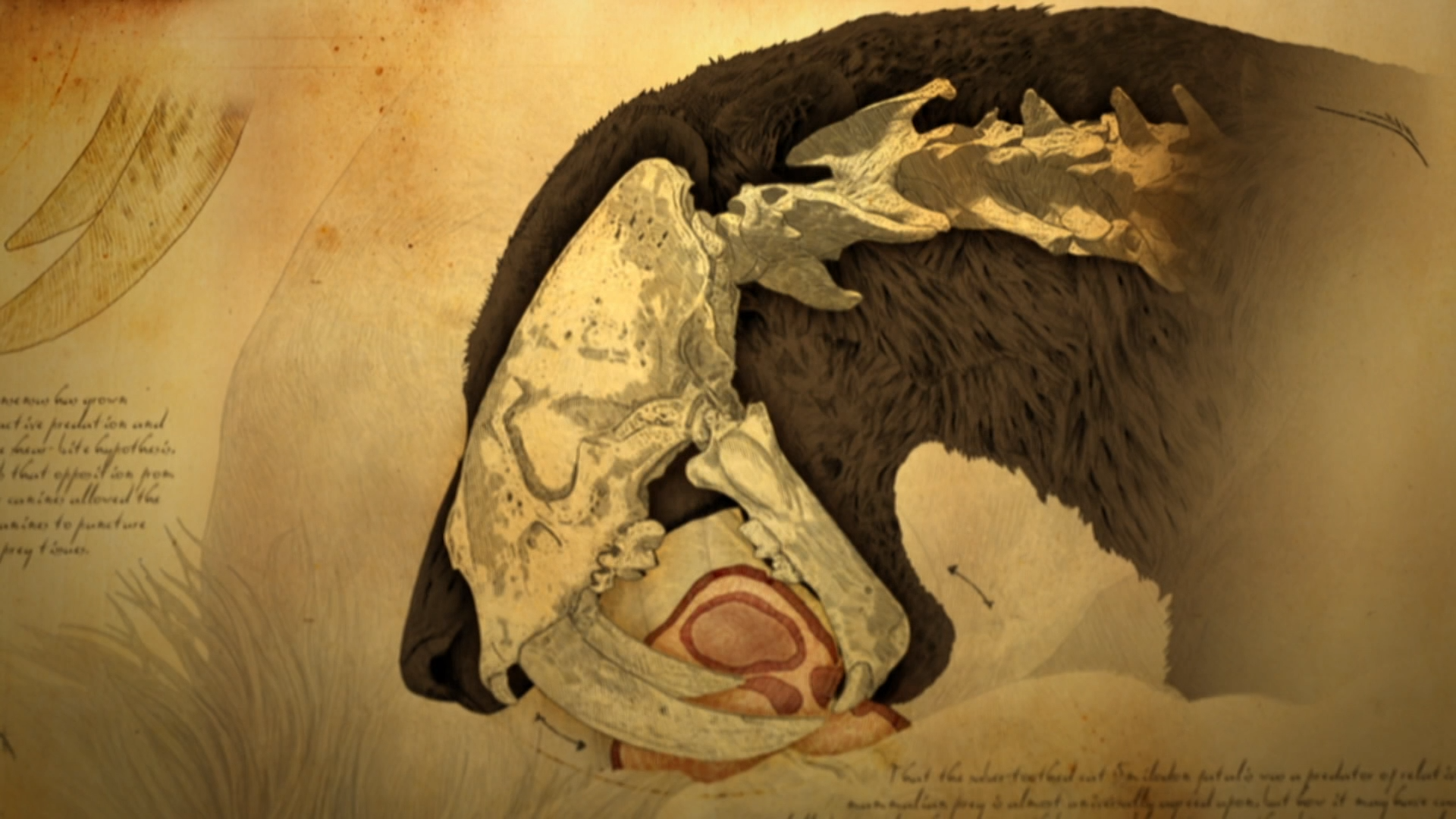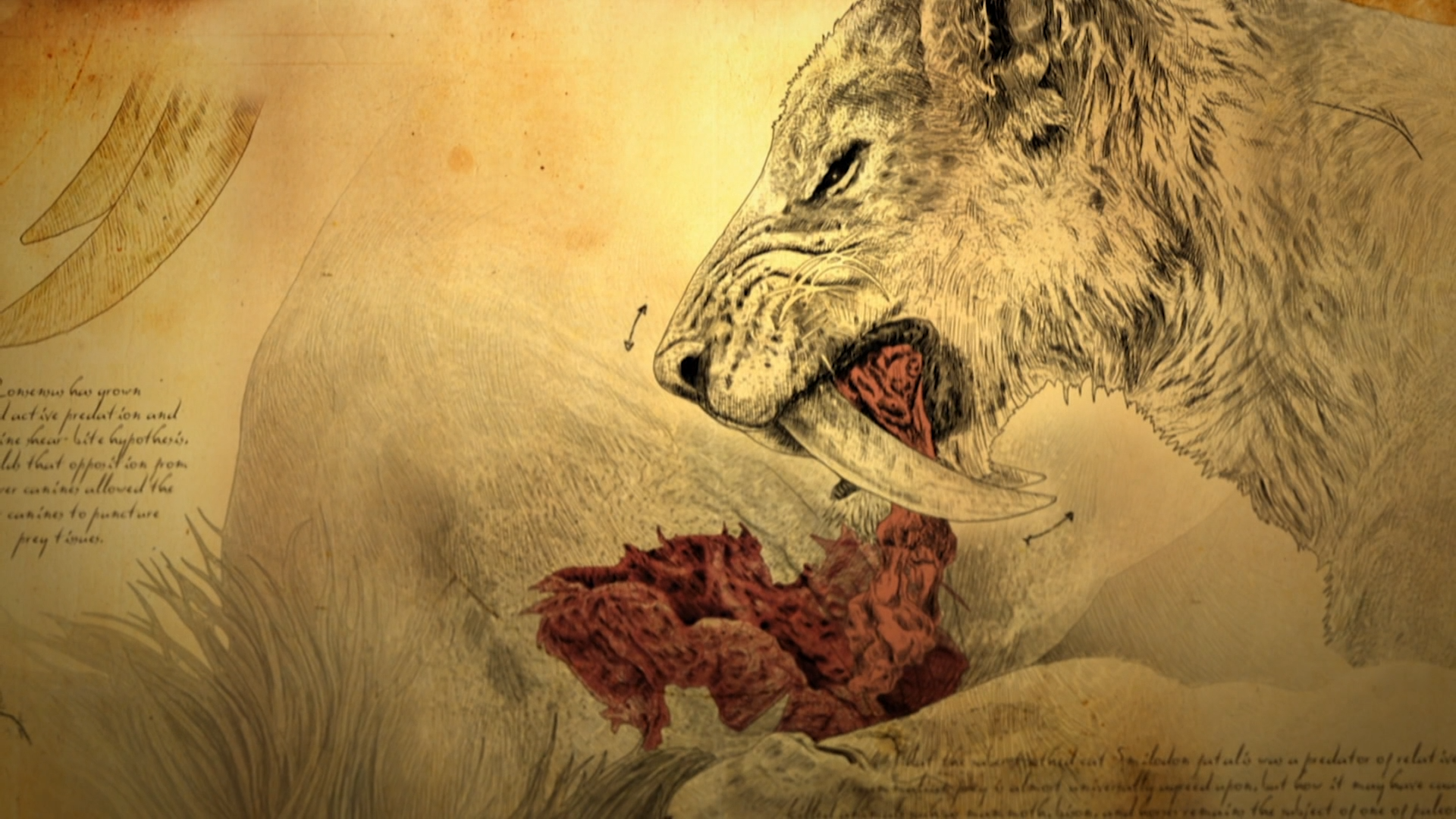The Smilodon (saber tooth tiger) was built robustly compared to extant cats. It had a muscular neck, broad shoulders and strong forearms. It was comparable in size to a modern-day lion but was almost twice as heavy owing to its stocky build. It had a short tail for its size when compared to modern cats. This couldn’t help balance it while running like the tails of lions and, especially, cheetahs. Its limb proportions are also similar to those of modern day forest dwelling cats, suggesting it might have needed to traverse dense vegetation. Thus, the general consensus is that it was an ambush predator like tigers today. To clarify, the Smilodon is called the saber-toothed tiger due to its similarity with the tiger in hunting technique and predatory role, and it is not very closely related to the tiger in physiology or on the evolutionary tree.
It was earlier thought that the teeth were used to hack and slash at the belly or throat of the prey, or to allow the animal to hold onto the prey. However, the teeth can be broken by a relatively weak bending stress. A wildly bucking herbivore like an ancient bison can break these canines if the Smilodon tried to hold on to it using mainly its teeth. Since specimens with broken teeth are rare, it must have been hunting and killing using a safer strategy than mentioned above. Modern cats like lions suffocate their prey by pressing down on the throat of their prey, often without even breaking the skin. The saber-tooth couldn’t do this because of its sabers. Recent studies have been conducted using biomechanical models (refer to the Nat Geo article) A biomechanical model is made by CT scanning skulls of Smilodon and then testing it for strains during movement as well as a measure of the stress that various parts can handle. The model lights up to show which parts are subject to more stress and need to be strong along with which are weaker and were protected from stress. Computerized muscles constructed from comparison with modern felids (organisms related to cats) and the bone structure of Smilodon are used to simulate real life movements of the skull. These studies show that its bite force was about a third of the modern-day lion. This means it can’t crush bones or use solely its jaws to inflict fatal bites on its prey (its jaw muscles alone weren’t strong enough and teeth were susceptible to bending stress). The long forearms (they were longer than its hindlimbs) and broad shoulders, as well as robust neck muscles and 130-degree jaw gape point to possible killing strategies. It possibly used the “canine shearing bite” technique, where the downward movement of neck muscles and the wide jaw gape allow it to sink its canines into the throat of its prey. Thus, instead of chomping down, it first thrust its canines into the flesh and then used it large, sharpened incisors at the front of the upper and lower jaw to help in securing a grip. Then it pulled away using its powerful neck, shearing large portions of meat. The diagrams below show the sequence of steps-




This method means it used its teeth to inflict fatal wounds and gather meat in its mouth rather than hanging on to prey. Furthermore, it proceeded to tear or shear of the flesh rather than cleanly slice through it (thinner and sharper teeth are needed for that). The long and strong heel bones show that it was a good jumper, and it femurs showed cortical thickening incomparable to that of modern cats. These strengthened bones could bear greater “loading” or strain from using muscles attached to them compared to modern day big cats. Everything considered together, it meant that it could hunt prey significantly larger than itself. Using its strong jump and muscled arms to grab and bring down prey so it could deliver the killing bite, likely ripping out the throat of its victim. (refer to the paper by Meachen-Samuels and Valkenburgh).

